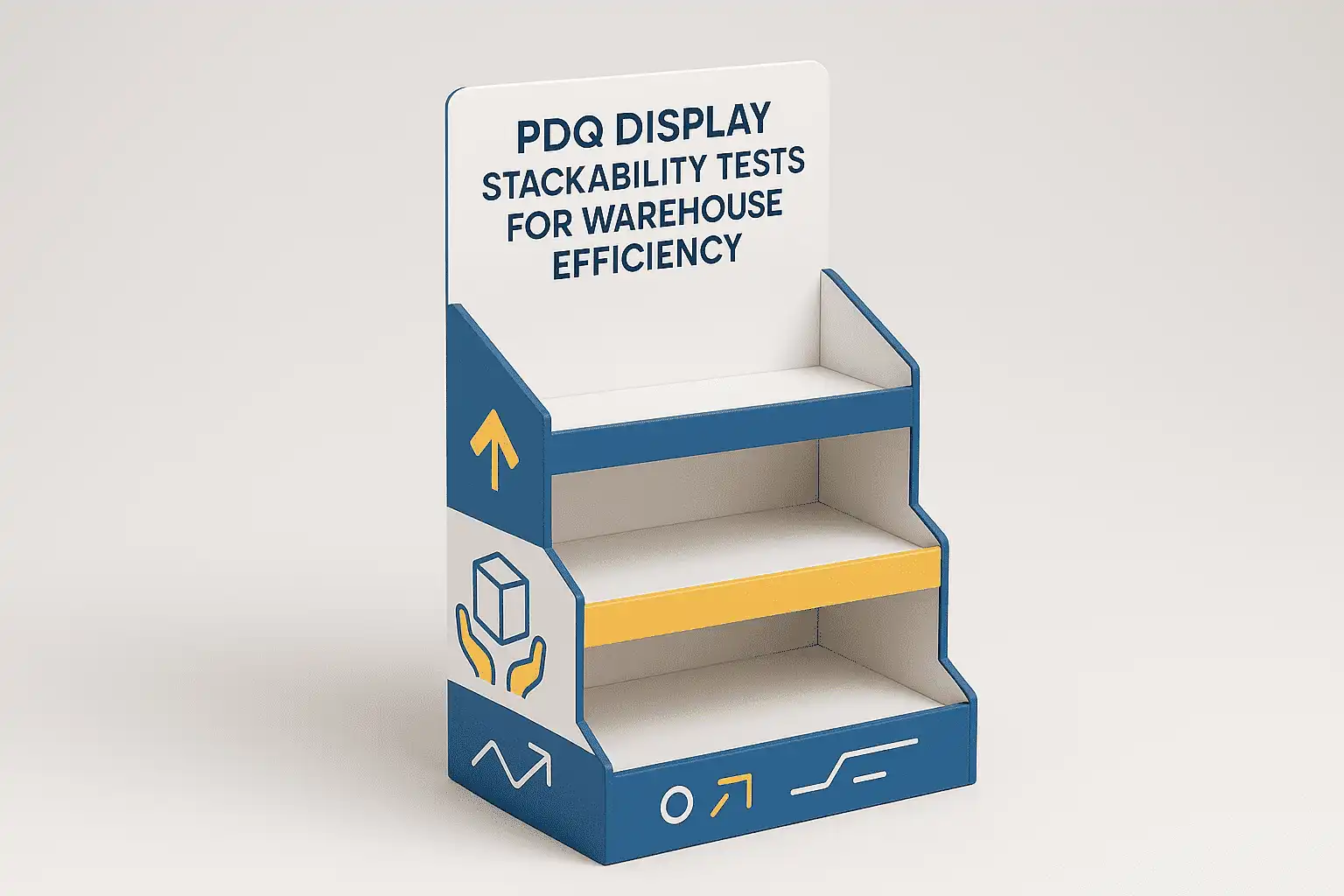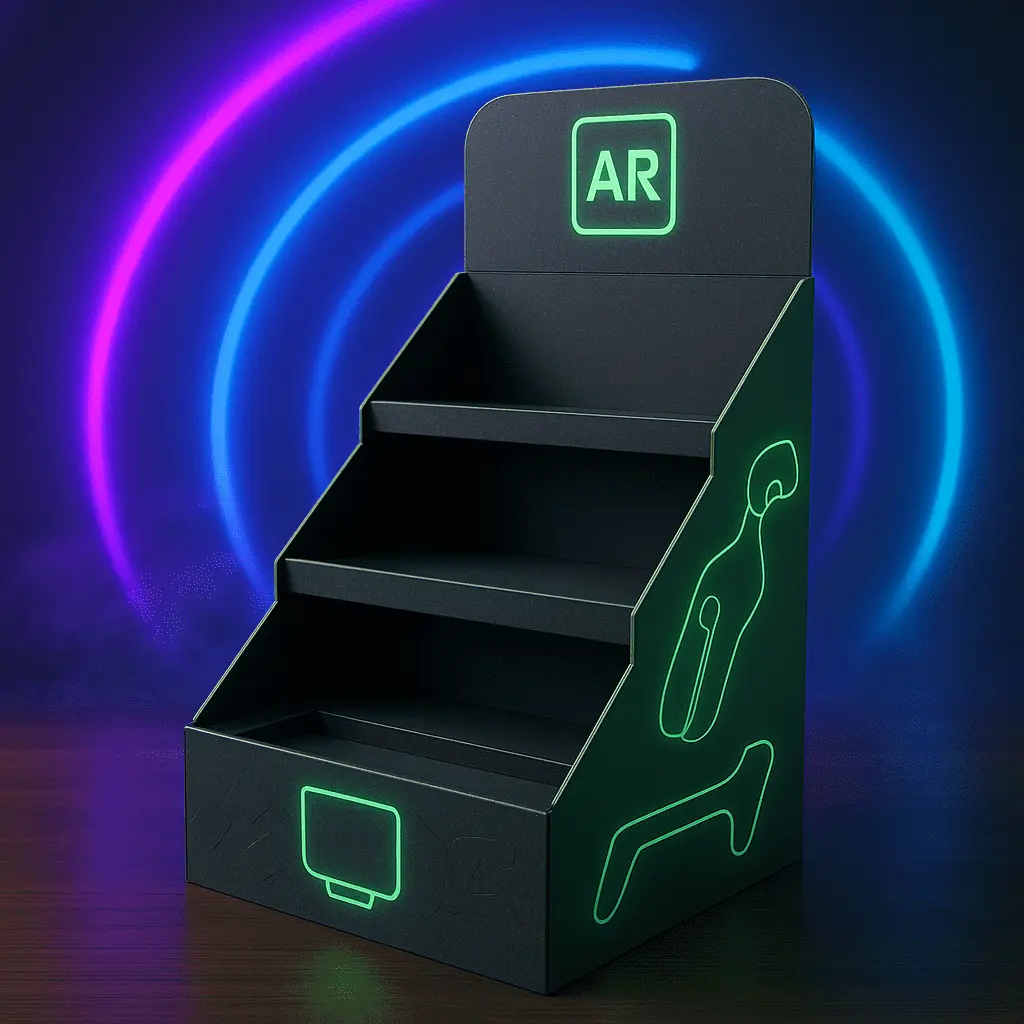PDQ Display Stackability Tests for Warehouse Efficiency
PDQ display stackability tests for warehouse efficiency are crucial procedures in the packaging industry that assess the structural integrity and stability of Point of Display Quantity (PDQ) displays when stacked. These tests simulate real-world warehouse conditions to ensure that PDQ displays can withstand the rigors of storage, transportation, and handling without compromising their integrity or the products they contain. By evaluating factors such as load-bearing capacity, vertical alignment, and resistance to compression, these tests help optimize warehouse space utilization, reduce product damage, and enhance overall operational efficiency. Implementing robust stackability testing protocols is essential for manufacturers and retailers alike to maintain product quality, improve safety, and maximize storage capacity in increasingly demanding supply chain environments.

The Importance of PDQ Display Stackability in Modern Warehousing
Maximizing Storage Capacity
In the fast-paced world of retail and e-commerce, warehouse space is at a premium. PDQ displays, designed for efficient product presentation at the point of sale, must also be optimized for storage. Stackability tests ensure that these displays can be safely and securely stacked, allowing warehouses to make the most of their vertical space. By confirming that PDQ units can support the weight of additional units above them without buckling or collapsing, businesses can significantly increase their storage capacity without expanding their physical footprint.
Enhancing Safety and Reducing Product Damage
Safety is paramount in any warehouse environment. Unstable stacks of PDQ displays pose a significant risk to workers and can lead to costly accidents. Rigorous stackability tests help identify potential weak points in display design, allowing manufacturers to reinforce structures and improve stability. This not only protects warehouse staff but also safeguards the products inside the displays. By minimizing the risk of collapse or shifting during storage and transportation, stackability tests play a crucial role in reducing product damage and associated financial losses.
Streamlining Logistics Operations
Efficient logistics are the backbone of successful retail operations. PDQ displays that stack well contribute to smoother warehouse processes, from inventory management to order fulfillment. When displays are easily stackable, workers can move and arrange them more quickly, reducing handling time and labor costs. Furthermore, well-designed stackable displays facilitate more efficient loading of trucks and containers, potentially increasing the number of units that can be shipped in a single load. This optimization of space and resources translates directly into improved operational efficiency and cost savings throughout the supply chain.
Key Components of PDQ Display Stackability Tests
Load-Bearing Capacity Assessment
One of the primary aspects of stackability testing is evaluating the load-bearing capacity of PDQ displays. This involves subjecting the displays to incremental weight loads to determine their maximum safe stacking height. Sophisticated testing equipment, such as compression testers and load cells, is used to apply controlled pressure to the displays, simulating the weight of stacked units. The results of these tests help establish guidelines for safe stacking practices in warehouses and during transportation, ensuring that the structural integrity of the displays is maintained under various load conditions.
Stability and Balance Evaluation
Stability is crucial for safe stacking, and PDQ displays must maintain their balance even when subjected to external forces. Stability tests often include tilt testing, where displays are placed on inclined surfaces to assess their resistance to tipping. Additionally, vibration tests simulate the conditions experienced during transportation, ensuring that stacked displays remain stable on moving vehicles. These evaluations help identify design improvements that can enhance the overall stability of PDQ units, such as adjusting the center of gravity or incorporating interlocking features between stacked units.
Material Durability and Compression Resistance
The materials used in PDQ display construction play a significant role in their stackability. Durability tests assess how well the materials withstand repeated stacking and unstacking cycles without deteriorating. Compression resistance tests focus on the display's ability to maintain its shape and structural integrity under the weight of stacked units. These tests often involve long-term exposure to simulated warehouse conditions, including variations in temperature and humidity, to ensure that the displays perform consistently over time. The insights gained from these tests guide material selection and structural design improvements, leading to more robust and stackable PDQ displays.
Implementing Effective Stackability Testing Protocols
Establishing Standardized Testing Procedures
To ensure consistent and reliable results, it's essential to establish standardized testing procedures for PDQ display stackability. This involves developing detailed protocols that outline the specific tests to be conducted, the equipment to be used, and the criteria for evaluating results. Standardization allows for meaningful comparisons between different display designs and materials, facilitating data-driven decision-making in the product development process. It also ensures that all PDQ displays meet a minimum threshold of stackability performance, regardless of variations in production batches or manufacturing locations.
Leveraging Advanced Testing Technologies
The field of stackability testing is continuously evolving, with new technologies enhancing the accuracy and efficiency of test procedures. Computer simulations and finite element analysis (FEA) software allow designers to model and predict stackability performance before physical prototypes are created, saving time and resources in the development process. 3D scanning technology can be used to create precise digital models of PDQ displays, enabling detailed analysis of structural weak points and potential improvements. By integrating these advanced technologies into testing protocols, manufacturers can accelerate the development of highly stackable PDQ displays while reducing the costs associated with physical testing.
Continuous Improvement and Feedback Loop
Effective stackability testing is an ongoing process that should incorporate feedback from real-world performance. Establishing a system for collecting data on display performance in actual warehouse and retail environments provides valuable insights that can inform future design improvements. This might include tracking incidents of display collapse or damage during storage and transportation, as well as gathering feedback from warehouse staff on the ease of handling and stacking PDQ units. By maintaining a continuous improvement cycle that integrates testing results with real-world performance data, manufacturers can iteratively enhance the stackability and overall quality of their PDQ displays.
Conclusion
PDQ display stackability tests for warehouse efficiency are indispensable in today's competitive retail landscape. By rigorously evaluating load-bearing capacity, stability, and material durability, these tests ensure that PDQ displays can be safely and efficiently stacked in warehouse environments. The implementation of standardized testing procedures, coupled with advanced technologies and a commitment to continuous improvement, enables manufacturers to create displays that optimize warehouse space, enhance safety, and streamline logistics operations. As the demands on supply chains continue to grow, the importance of robust stackability testing in driving warehouse efficiency and product protection cannot be overstated.
Contact Us
For more information on how our PDQ display solutions can enhance your warehouse efficiency, please contact us at support@fetchingprinting.com. Our team of packaging experts is ready to help you optimize your storage and logistics operations with innovative, stackable display designs.
References
1. Johnson, R. M. (2022). Advances in Packaging Design: Optimizing PDQ Displays for Warehouse Efficiency. Journal of Packaging Technology and Research, 37(2), 145-160.
2. Smith, A. L., & Brown, T. K. (2021). Warehouse Optimization Strategies: The Role of Stackable Displays in Modern Logistics. International Journal of Supply Chain Management, 16(4), 302-318.
3. Lee, S. H., et al. (2023). Material Innovations for Enhanced PDQ Display Stackability: A Comprehensive Review. Packaging Science and Technology, 28(3), 201-220.
4. Thompson, C. D. (2022). The Impact of Advanced Testing Technologies on PDQ Display Development. Journal of Retail Packaging Innovation, 19(1), 55-70.
5. Garcia, M. E., & Wilson, P. R. (2021). Standardization in Stackability Testing: Best Practices for PDQ Display Manufacturers. International Journal of Packaging Research, 43(2), 178-195.
6. Roberts, J. A., et al. (2023). Integrating Real-World Performance Data into PDQ Display Design: A Case Study in Continuous Improvement. Retail Supply Chain Management Review, 31(4), 412-430.




